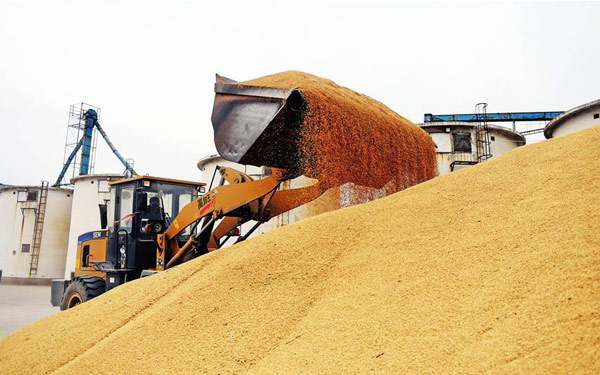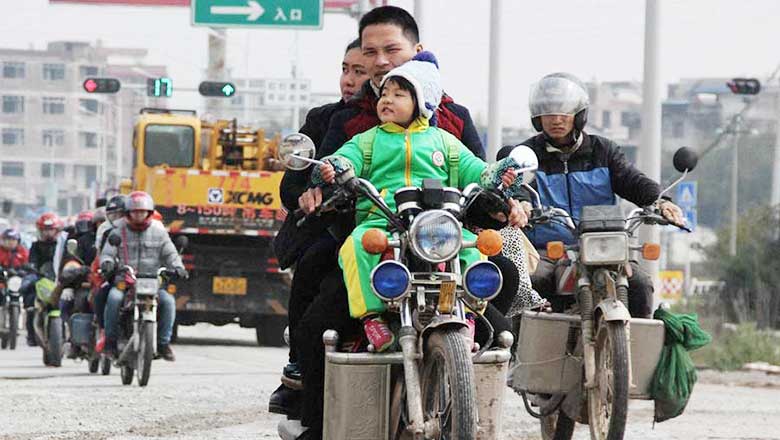Boost agricultural supplies
Updated: 2016-02-02 08:39
(China Daily)
|
||||||||
 |
|
A worker collects rice at a corn processing factory in Linghai, Northeast China's Liaoning province, Nov 19, 2015.[Photo/Xinhua] |
Bumper harvests can no longer guarantee handsome income growth for Chinese farmers, especially as global commodity prices have collapsed in recent years.
To eliminate "absolute poverty" in the country by 2020 and considerably narrow the development gap between rural and urban areas, Chinese policymakers must accelerate income growth for farmers.
This year's No 1 central government document, issued last week, has identified supply-side reform as a way to boost agricultural modernization in the long run.
In 2015, China's rural per capita disposable income increased 8.9 percent year-on-year to 11,422 yuan ($1,743), while their net income was only 5,919 yuan under the calculation in 2010. Such steady income growth is in tandem with the fact that China's total grain output increased 2.4 percent year-on-year to 621 million tons in 2015, the 12th straight year of growth. Nevertheless, this will be a thorny problem as the grain stockpile is surging.
Big inventories used to be deemed a good thing for China, the world's most populous country. But too high inventories are neither necessary nor economical to maintain nowadays. Worse, the purchasing prices for reserves remain above market prices, which have been brought down by the increasing imports, and this has sent a misleading signal encouraging more domestic supplies.
It is reported that the government has been studying measures to adjust the supplies of agricultural products, including whether to reduce its reserve purchasing price or to subsidize only the gap between market prices and farmers' costs.
Such an update to the current policy is certainly needed. But the more urgent task is to have a thorough reassessment of Chinese farmers' competitive edge in view of both the rising cost of agricultural labor at home and falling commodity prices globally.
While measures should be taken to protect farmers' interests so that the country will not suffer a major drop in grain production, comprehensive supply-side reforms must also be implemented to lower the costs for domestic agricultural production and provide more quality farm produce to satisfy the growing appetite of Chinese consumers.
- Obama pledges $4.2b for computer science education
- Zika a new headache for Olympics prep
- Key players in 2016 US presidential race
- Negotiating political transition in Syria 'possible': Hollande
- At least three killed in light plane crashes in Australia
- BOJ further eases monetary policy, delays inflation target

 International friendship blossoms in peony painting
International friendship blossoms in peony painting
 Culture Insider: Little New Year
Culture Insider: Little New Year
 Global celebrations mark Chinese New Year
Global celebrations mark Chinese New Year
 Motorcycles ride home for Spring Festival reunion
Motorcycles ride home for Spring Festival reunion
 Sharing their wealth: Chinese celebrities and charity
Sharing their wealth: Chinese celebrities and charity
 The world in photos: Jan 25 - 31
The world in photos: Jan 25 - 31
 Year of the Monkey arriving in Washington
Year of the Monkey arriving in Washington
 Djokovic puts down Federer fightback to reach final
Djokovic puts down Federer fightback to reach final
Most Viewed
Editor's Picks

|

|

|

|

|

|
Today's Top News
National Art Museum showing 400 puppets in new exhibition
Finest Chinese porcelains expected to fetch over $28 million
Monkey portraits by Chinese ink painting masters
Beijing's movie fans in for new experience
Obama to deliver final State of the Union speech
Shooting rampage at US social services agency leaves 14 dead
Chinese bargain hunters are changing the retail game
Chinese president arrives in Turkey for G20 summit
US Weekly

|

|







